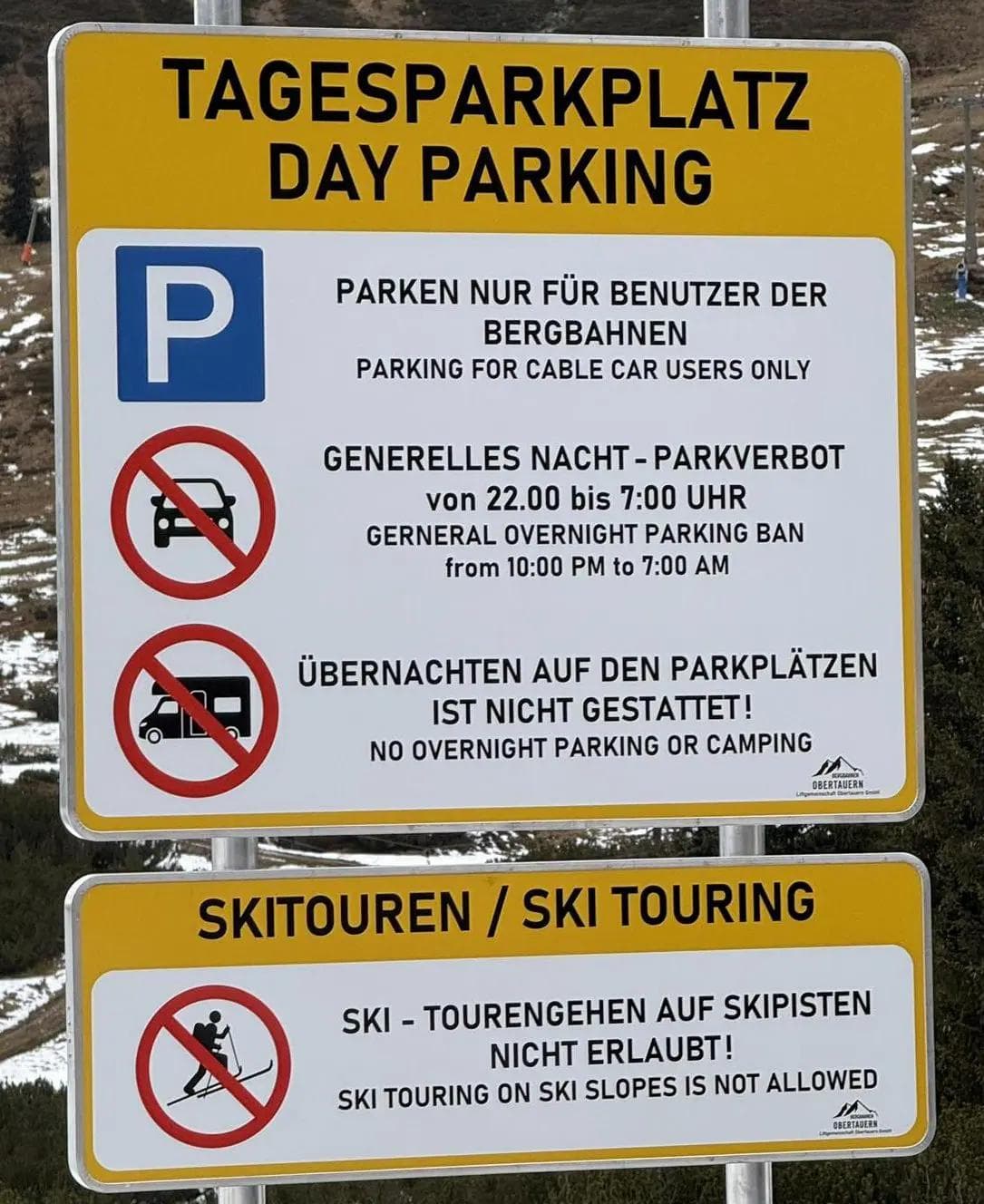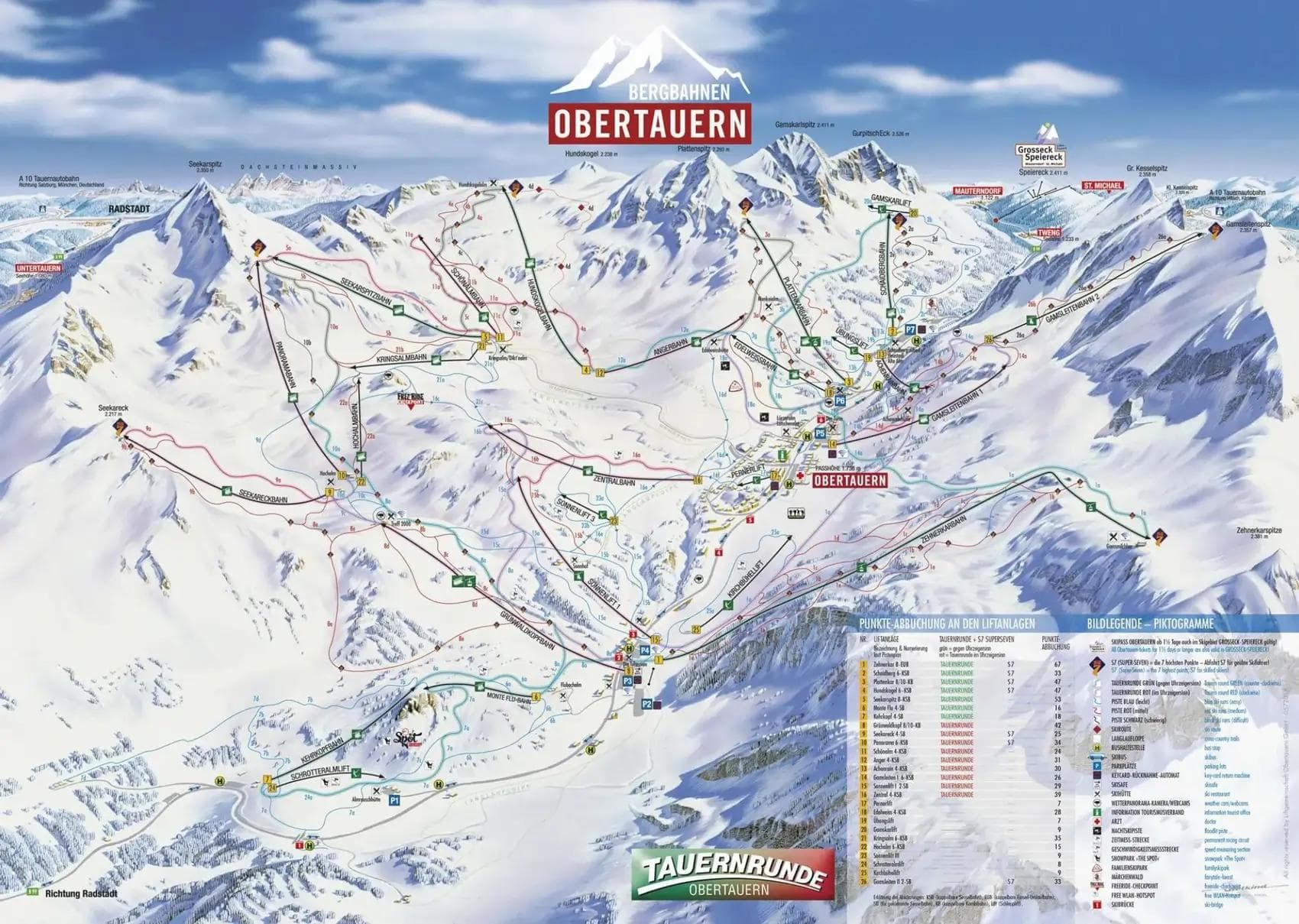
Obertauern Bans Uphilling as Austrian Resorts Crack Down on Ski Touring
Published Date:
Categories
Another Austrian Resort Chooses Outright Ban Over Managed Access
Obertauern has announced a complete ban on uphilling within its boundaries starting with the 2025-26 season, abandoning earlier attempts at finding middle-ground solutions. The resort claims years of conflict between uphill traffic and downhill skiers have resulted in accidents, though the specifics of these incidents remain notably absent from their announcement.
The ban extends beyond slope access. Car parks will now be restricted to guests holding valid lift passes, and overnight camping is prohibited—moves that effectively eliminate not just uphill access on groomed terrain but also backcountry touring that uses resort infrastructure as a staging point. It's a comprehensive shutdown that suggests the resort has decided the administrative hassle of managing uphill traffic outweighs any goodwill from the ski touring community.
What's missing from Obertauern's statement is any data quantifying the safety issues they reference. Local guiding companies have pushed back, with Bergsteigen.com noting they're "not aware of any accidents of ski tourers and skiers in Obertauern" and pointing out that operations have run without major incident for decades. That disconnect between the resort's stated rationale and observations from professionals who work on these slopes daily raises questions about whether this is genuinely about safety or about controlling how people use the mountain.

The Pattern Across Austrian Resorts
Obertauern joins Semmering, resorts in the Salzburg region, and Bad Kleinkirchheim in implementing outright bans rather than exploring alternatives like designated uphill routes or time-based access windows. This approach stands in contrast to resorts in Switzerland, France, and parts of North America that have managed to accommodate uphill traffic through clearly marked routes and specific hours—typically before lifts open or after they close.
The resort's official statement frames this as protection for both uphill and downhill users, but that's corporate speak for "we don't want to deal with it." Designated uphill tracks aren't a novel concept. They've been successfully implemented at numerous resorts globally, separating traffic and reducing conflict. The fact that Obertauern tested "different solutions" without achieving "the desired effect" suggests either inadequate implementation or that the desired effect was elimination rather than coexistence.
The parking restrictions add another layer that affects more than just those skinning up groomed slopes. Backcountry tourers who previously used Obertauern as an access point for terrain outside resort boundaries are now effectively excluded. Requiring a lift pass to park is a revenue capture mechanism dressed up as crowd management—if safety were the sole concern, parking access for those heading to non-resort terrain wouldn't be relevant.
What's particularly telling is the lack of granular detail about the conflicts that supposedly necessitated this ban. Were there actual collisions? Near misses? Complaints from season pass holders? Without data, we're left to take the resort's word that this was the only option, despite evidence from other markets showing that managed coexistence is entirely feasible.

What This Means for Uphill Access in the Alps
The trend across Austrian resorts toward blanket bans rather than managed access suggests an industry preference for simple prohibition over nuanced policy. It's administratively easier to ban an activity than to designate routes, enforce protocols, and educate users—but it's also a missed opportunity to accommodate evolving use patterns on public and quasi-public mountain terrain.
For skiers and riders planning trips to Austria, the message is clear: verify current uphill policies before assuming access. What was permitted last season may not be this year, and the trend appears to be moving toward restriction rather than accommodation. Those interested in uphill training or ski touring should look for resorts that have proactively established designated routes rather than those issuing reactive bans.
The disconnect between local guide operations reporting no incidents and resort management citing safety concerns deserves scrutiny. If professional guides running commercial operations in the same terrain see no problems, it suggests the safety rationale may be overstated or that conflicts are primarily about perception and annoyance rather than documented hazards.
Globally, the ski industry faces questions about access, tradition, and how mountains are used. Uphill traffic has grown substantially over the past decade, driven by fitness trends, backcountry interest, and equipment improvements. Resorts that choose prohibition over integration are making a statement about who their mountains are for—and that statement is increasingly at odds with how many people want to use alpine terrain. Whether that's a defensible position depends on data and transparency that, so far, hasn't accompanied these bans.


